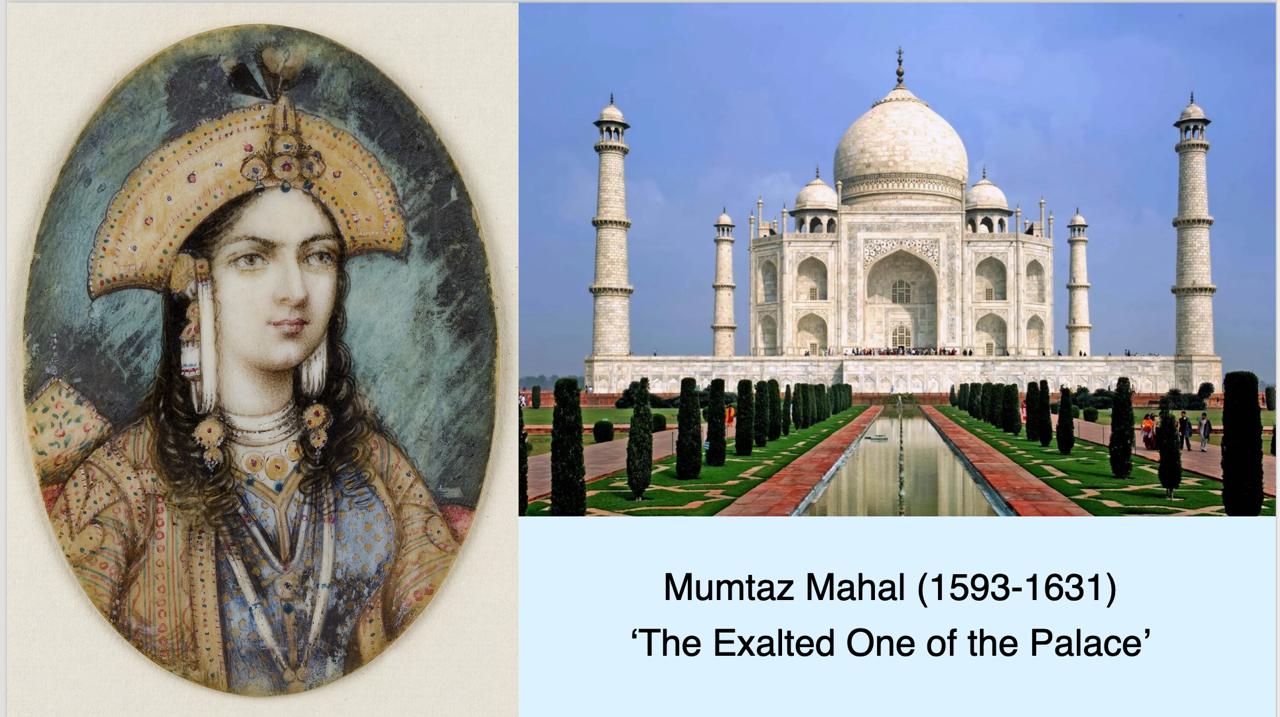ON THIS DAY: 17 June 1631 – Mumtaz Mahal, ‘The Exalted One of the Palace,’ died while giving birth to her 14th child. The Taj Mahal would be built as her mausoleum, and as a tribute from her adoring husband.
Mumtaz Mahal was the second wife of the fifth Mughal emperor, Shah Jahan, until her death in 1631. Born into Persian nobility, she was married at the age of 19, although she had been betrothed to Jahan since she was 14. Jahan later took a third wife, though historical records show he had little interest in first or third wife as they were made as political alliances. According to the official court chronicler, Shah Jahan’s heart and his attentions were devoted solely to Mumtaz. Although his other wives each bore him a child, Mumtaz remained his true companion. She bore him 14 children, but seven died at birth or in early childhood.
Well-educated and highly cultured, Mumtaz was fluent in both Arabic and Persian. She wrote poetry and was Shah Jahan’s constant companion, even joining him on military campaigns. They lived in immense luxury; her residence was adorned with gold and precious stones. Jahan granted her a monthly allowance, lands, and properties. Behind the scenes, Mumtaz wielded significant political influence. If she disagreed with one of Jahan’s decisions, she would discreetly and privately touch him on the back. She also played a key role in commuting death sentences.
The birth of their 14th child was prolonged, lasting more than 30 hours. Mumtaz died from a postpartum haemorrhage in Burhanpur, where she had accompanied her husband on campaign. She was initially buried in a walled pleasure garden on the banks of the Tapti River in Burhanpur. Devastated by her death, Shah Jahan went into mourning for a year. It was said his hair turned white from grief.
In December 1631, her body was exhumed and transported to Agra in a golden casket. There, she was temporarily interred in a small building by the River Yamuna.
Meanwhile, in 1631, Shah Jahan commissioned the construction of the Taj Mahal, an ivory-white marble mausoleum to be built on the banks of the Yamuna River in Agra, Uttar Pradesh. Set within 42 acres, the complex includes a mosque, a guest house, and meticulously designed formal gardens. The monument took 22 years to complete and reportedly cost the equivalent of over $900 million.
In 1983, the Taj Mahal was designated a UNESCO World Heritage Site. Today, it welcomes between 7 and 8 million visitors annually.

